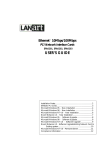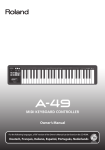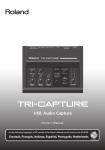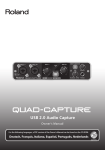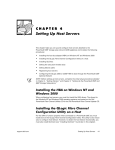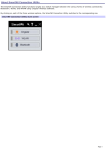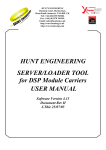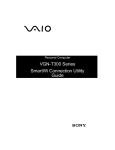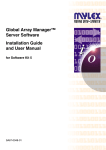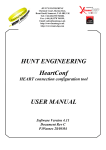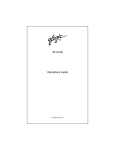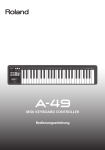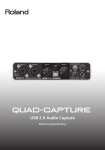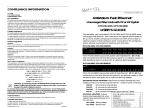Download Transition Networks MIL-SM8TXAF2GPA Switch User Manual
Transcript
Ethernet™ 10/100BASE-SX, 100BASE-FX PCI Network Interface Cards N-FX-ST-01, N-FX-SC-01, N-FX-MT-01, N-SX-ST-01, N-SX-SC-01, N-SX-MT-01, ND-FX-ST-01, ND-FX-SC-01, ND-FX-MT-01, ND-SX-ST-01, ND-SX-SC-01, ND-SX-MT-01 USER’S GUIDE Adapter Hardware Installation ...................................................2 PCI Network Interface Cards......................................................3 Adapter Software Installation Note ............................................4 Microsoft Windows 95 - New Installation ................................4 Microsoft Windows 95 - Software Upgrade .............................6 Microsoft Windows 98 - New Installation ................................7 Microsoft Windows 98 - Software Upgrade .............................9 Microsoft Windows NT 4.0 - New Installation........................10 Microsoft Windows NT 4.0 - Software Upgrade ....................11 Novell Netware 4.X / 5.X - New Installation...........................12 Novell Netware 4.X / 5.X - Software Upgrade/Adding Network Card to Existing system. .................................................13 Microsoft Windows NT 4.0 - Permanet Server .........................14 Installing SunSoft Solaris Driver (X86 Environment) .................15 DMI Installation Procedure (DMI Version 2.0) .........................15 Linux Installation .....................................................................15 Compliance Information ..........................................................16 ADAPTER HARDWARE INSTALLATION Follow Instructions outlined in the indicated personal computer user’s guide for installing PCI Bus addin cards into a PCI slot that supports bus mastering. CAUTION: Heed the warnings in the PC user ‘s guide in regard to proper protection against static discharge. Always hold the adapter by the metal bracket. Always be properly grounded when handling an adapter. Since adapters are designed with CMOS ICs and are particularly sensitive to static discharge. Failure to observe this caution could result in damage to the adapter and subsequent network failure. MAGIC PACKET™ SET UP (optional) NOTE: The adapter Magic Packet is patented technology from AMD Corporation which works only on a PC that supports the Wakeup On LAN feature (via Magic Packet) through a 3-pin connector with +5.0V standby. CAUTION: Do not connect the AC cable to the PC until both the NIC and the Magic Packet are installed because the +5.0V standby power is up as soon as the AC cable is plugged into the PC. 1. Refer to PC user ‘s guide to identify the PC “Wakeup” on LAN connector. Connect Magic Packet 3-pin flat ribbon cable between connector J2 on the NIC and +5.0V standby connector on the PC. 2. Connect the AC power cable to the PC. 3. Power the PC. 4. Follow the PC user ‘s guide to change the ıIOS setup: 5. • Under “POWER” (or equivalent) menu, enable Power Management • Under “SYSTEM BOOT” (or equivalent) menu, enable ON LAN and ON PME. Save BIOS changes and exit. Technical Support In the event of difficulty in installing the PCI Network Interface Cards, contact TRANSITION Networks Technical Support at: (800) 260-1312 2 PCI NETWORK INTERFACE CARDS Two (2) ST, SC, or MT-RJ adapter connections (indicated as xx) to 100BASEFX. ND-SX-xx-01*† Two (2) ST, SC, or MT-RJ adapter connections (indicated as xx) to 10/100BASE-SX. * The adapter remains at 100Mbps when possible. Should the 100Mbps network become unavailable, the adapter seamlessly switches activity to 10Mbps and continuously monitors the network for a restored link. When 100Mbps is restored, the adapter seamlessly switches back to 100Mbps. TX ND-FX-xx-01† RX One (1) ST, SC, or MT-RJ adapter connection (indicated as xx) to 10/100BASE-SX. ACT STA SEL ACT STA SEL COL FD COL FD MP MP ACT STA SEL †Network Redundancy If cable is installed at both connections on the ND-FX-xx-01 or on the ND-SX-xx-01, each connection is redundant to the other. Network activity is established first at the upper, primary port link. If the primary port link is down more than a few seconds, the NIC automatically switches over to the bottom, secondary port link and network activity is established at the secondary port link. When the primary port link is re-established, network activity automatically switches back to the primary port link. TX N-SX-xx-01* RX One (1) ST, SC, or MT-RJ adapter connection (indicated as xx) to 100BASE-FX. RX N-FX-xx-01 TX TRANSITION Networks Fiber-Optic PCI Network Interface Cards (Adapters) are 32-bit bus-mastering PCI cards that support both half-duplex and full-duplex operation and that comply with PCI Specifications, N-FX-xx-01 ND-FX-xx-01 revision 2.1 and 2.2, and with both IEEE 802.3 10BASE-FL, N-SX-xx-01 ND-SX-xx-01 100BASE-SX, and 100BASE-FX standards LED Indicators The two LEDs closest to each connector shows link status and activity for that port. Collision, full-duplex, and selection LEDs apply to the active network port. ACT(ivity) Flashing LED indicates link is passing traffic Dark LED indicates link is idle. NOTE: If link is unavailable, indicator is dark. COL(lisiion) Flashing LED indicates collision in active network. F(ull) D(uplex) Steady LED indicates full duplex mode. Dark LED indicates half duplex mode. STAT(us) Steady LED indicates link is up. Flashing LED indicates link is unavailable. To correct, verify that the RX port is cabled to the TX port at the far end of the cable, and vice versa. Also verify that the equipment is functioning at the far end and that the cabling does not exceed IEEE 802.3(u) recommended lengths. M(agic) P(acket) Flashing LED indicates the NIC received a valid Magic Packet to “wake up” the PC. SEL(ect) Steady LED indicates that adjacent port is active. 3 ADAPTER SOFTWARE INSTALLATION NOTE TRANSITION Networks Fiber-Optic PCI Network Interface Cards (Adapters) are shipped with one (1) CD driver disk containing software drivers for various network operating systems, diagnostic utilities, and electronic format documentation. Follow the directions in this user’s guide (also provided on disk) to install the indicated software driver. Software installation instructions that follow include statements written in the format: “ type - A:<data to be entered>“ Where appropriate, substitute the actual disk drive used for “A: “. MICROSOFT WINDOWS 95 - NEW INSTALLATION 1. Remove all network drivers or any PCI Ethernet Controller to make a clean installation. 2. Remove any netamd.inf files from \Windows\Inf directory 3. Shutdown Windows 95 and power-off the machine. 4. Install the Transition Networks (or LANart EFA020X ) Adapter card in accordance with your personal computer user's manual. Again, follow all handling procedures to avoid electro-static discharges. 5. Turn the computer on to start Windows 95 6. If your computer is Plug and Play compatible, Windows 95 will recognize that new hardware has been installed.. Follow the steps below. Other wise, Skip to step 27 7. At the – Update Device Driver Wizard Screen - Insert the Transition Networks Driver Disk 8. Click <Next> 9. Click <Other Location> 10. Browse the drive A to get the following path or type the following path A:\Win95\Mac3 or A:\Win95\Mini4 - depending on the driver you want to install 11. Click <OK> 12. Click <Finish> 13. When prompted for the Transition Networks Device driver Disk - Click <OK> 14. Type the path - A:Win95\Mac3 or A:\Win95\Mini4 depending on the driver you chose on step 10 15. When prompted insert the Windows 95 CD-ROM 16. Click <OK> and type the correct path 17. Windows95 will now install the driver - When finished 18. Click <YES> 19. Remove the Transition / LANart driver disk, and power up the computer, and start Windows 95. 20. Follow the steps below to configure your Adapter’s Properties 4 21. When the system comes up open Netowok Neighborhood by right clicking 22. Click on " Properties" 23. Highlight "Transition \ LANart …." And , Click on "Properties" 24. Click on Advanced 25. Chose the properties as required by Network Administrator 26. To access your network, protocols will need to be configured. Please see your network administrator for details. 27. If your computer is not Plug and Play compatible, open the control panel by clicking "Start," then "Settings," then "Control Panel." 28. Open the Network control panel by double clicking the "Network" icon. 29. Click "Add" inside the Network control panel, then select "Adapter", and click "Add" inside the Select Network Component Type window. Select "Have Disk." 30. For the NDIS3 MAC driver, type at the prompt: "A:\Win95\Mac3" and click "OK." For the NDIS4 MINIPORT driver, type at the prompt: "A:\Win95\Mini4" and click "OK." 31. Select "OK" to exit the Network control panel. 32. You will be prompted to insert your original Windows 95 CD. Insert the CD, and click "OK" to begin copying files. 33. Restart the computer to and follow steps below. 34. When the system comes up open Netowok Neighborhood by right clicking 35. Click on " Properties" 36. Highlight "Transition \ LANart …." And , Click on "Properties" 37. Click on Advance 38. Chose the properties as required by Network Administrator 39. Restart the computer. Your Transition \ LANart adapter is now configured. To access your network, protocols will need to be configured. Please see your network administrator for details. 5 MICROSOFT WINDOWS 95 - SOFTWARE UPGRADE 1. Power up the computer, and start Windows 95. 2. The following instruction is to update the driver for LANart network card. 3. Update the driver for Transition Networks / LANart (EFA020X) - open the control panel by clicking "Start," then "Settings," then "Control Panel." 4. Double Click "system" 5. Click "Device Manager" 6. Double Click "Network Adapter" 7. Highlight "Transition Networks / LANart…." And , Click on "Properties" 8. Click on "Driver" and Click on "Update Driver" 9. Click on "Next" and choose - "No, Select Driver from List." 10. Click "Next" and Highlight Transition Networks / LANart EFA020X Adapter 11. Click "Have Disk" and insert the Transition Network Driver Disk (Disk1) For the NDIS3 MACdriver, type at the prompt: "A:\Win95\Macs" and click "OK." For the NDIS4 MINIPORT driver, type at the prompt: "A:\Win95\Mini4" and click "OK." 12. Click "OK" 13. When prompted for the 95 CD 14. Click <OK> and type the correct path 15. Click <Close> and configure the Adapter 16. When the system comes up open Netowok Neighborhood by right clicking 17. Click on " Properties" 18. Highlight "Transition \ LANart …." And , Click on "Properties" 19. Click on Advance 20. Chose the properties as required by Network Administrator 21. Restart the computer. Your Transition Networks / LANart adapter is now configured. To access your network, protocols will need to be configured. Please see your network administrator for details. 6 MICROSOFT WINDOWS 98 - NEW INSTALLATION 1. Copy the appropriate device install script For NDIS3 MAC driver type copy A:\Win98\Nids3\Mac\Netamd.inf C:\Windows\Inf For NDIS4 MINIPORT driver type copy A:\Win98\Nids4\Mini\Netamd.inf C:\Windows\Inf 2. Shutdown Windows 98 and power-off the machine. 3. Install the Adapter card in accordance with your personal computer user's manual. Again, follow all handling procedures to avoid electro-static discharges. 4. Turn the computer on to start Windows 98 5. If your computer is Plug and Play compatible, Windows 98 will recognize that new hardware has been installed, and will attempt to configure itself. Follow the steps below. Other wise, Skip to step 11 6. Insert the Driver Disk into the disk drive. 7. When prompted for the Win 98 Disk, type the following path For NDIS3 MAC driver type A:\Win98\Nids3\Mac For NDIS4 MINIPORT driver type A:\Win98\Nids4\Mini 8. When prompted insert the Windows 98 CD-ROM 9. Click "Yes" 10. Remove the driver disk, and power up the computer, and start Windows 98. When system comes up, go to step 18. 11. If your computer is not Plug and Play compatible, open the control panel by clicking "Start," then "Settings," then "Control Panel." 12. Open the Network control panel by double clicking the "Network" icon. 13. Click "Add" inside the Network control panel, then select "Adapter", and click "Add" inside the Select Network Component Type window. Select "Have Disk." 14. For the NDIS3 MAC driver, type at the prompt: "A:\Win95\Ndis3\Mac" and click "OK." For the NDIS4 MINIPORT driver, type at the prompt: "A:\Win95\Ndis4\Mini" and click "OK." 15. Select "OK" to exit the Network control panel. 16. You will be prompted to insert your original Windows 95 CD. Insert the CD, and click "OK" to begin copying files. 17. Restart the computer and follow steps below. 18. When the system comes up, open the control panel by clicking "Start," then "Settings," then "Control Panel." 7 19. Double Click "system" 20. Click "Device Manager" 21. Double Click "Network Adapter" 22. Highlight " …." And , Click on "Properties" 23. Click on Advance 24. Chose the properties as required by the Network Administrator 25. Restart the computer. Your adapter is now configured. To access your network, protocols may need to be configured. Please see your network administrator for details. 8 MICROSOFT WINDOWS 98 - SOFTWARE UPGRADE 1. Power up the computer and start Windows 98. 2. Update the driver for the PCI card - open the control panel by clicking "Start," then "Settings," then "Control Panel." 3. Double Click "system" 4. Click "Device Manager" 5. Double Click "Network Adapter" 6. Highlight "LANart…." and Click on "Properties" 7. Click on "Driver" and Click on "Update Driver" 8. Click on "Next" and choose - "No, Select Driver from List." 9. Click "Next" and Highlight the Adapter 10. Click "Have Disk" 11. For the NDIS3 MAC driver, type at the prompt: "A:\Win98\Ndis3\Mac" and click "OK." For the NDIS4 MINIPORT driver, type at the prompt: "A:\Win98\Ndis4\Mini" and click "OK." 12. Click "OK" 13. Click "Next" and Click "Finish" 14. Click "Yes" to restart the computer. 15. When the system comes up, open the control panel by clicking "Start," then "Settings," then "Control Panel." 16. Double Click "system" 17. Click "Device Manager" 18. Double Click "Network Adapter" 19. Highlight " …." And , Click on "Properties" 20. Click on Advance 21. Chose the properties as required by the Network Administrator 22. Restart the computer. Your adapter is now configured. To access your network, protocols will need to be configured. Please see your network administrator for details. 9 MICROSOFT WINDOWS NT 4.0 - NEW INSTALLATION 1. Install the Transiton (EFA020X series) Adapter card in accordance with your personal computer user's manual. Again, follow all handling procedures to avoid electro-static discharges. 2. Start Windows NT, and open the control panel by clicking "Start," then "Settings," then "Control Panel." 3. Double Click on "Network." 4. Click on the Adapters tab. 5. Click "Add" inside the Network control panel, then select "Adapter." 6. Select "Have Disk." 7. Insert the Transition Driver Disk into the drive 8. For the NDIS3 MAC driver, type at the prompt: "A:\Winnt_Mini3\" and click "OK." For the NDIS4 MINIPORT driver, type at the prompt: "A:\Winnt_Mini4\" and click "OK." 9. Choose the appropriate Transition Netowks – LANart ( EFA020X) Adapter and Click on "OK" 10. Click on "Properties" - Choose the appropriate properties as required by the Network Administrator for the driver to work properly. Click "Close" - Protocols may need to be configured. Please see your Network Administrator for details 11. Select "OK" to exit the Network control panel, and Select "OK" when prompted to restart your machine. Remove the Transition Driver Disk. 12. If this is your first adapter installation, you will be prompted to insert your original Windows NT CD. Insert the CD, and click "OK" to begin copying files. 13. Restart the computer. Your LANart adapter is now configured. To access your network, protocols may need to be configured. Please see your network administrator for details. 10 MICROSOFT WINDOWS NT 4.0 - SOFTWARE UPGRADE 1. Start Windows NT, and open the control panel by clicking "Start," then "Settings," then "Control Panel." 2. Double Click on "Network." 3. Click on the Adapters tab. 4. Highlight the existing Transition LANart adapter, and click "Remove." Close the control panel to effect the change. 5. Re-open the Network control panel, and click "Add," then select "Adapters." 6. 7. Select "Have Disk." Insert the Transition Driver Disk into the drive For the NDIS4 MINIPORT driver, type at the prompt: "A:\Winnt_mini4\" and click "OK." 8. Choose the appropriate Transition / LANart (EFA020X) Adapter and Click on "OK" 9. Click on "Properties" - Choose the appropriate properties as required by Network Administrator for the driver to work properly. 10. Select "OK" to exit the Network control panel, and Select "OK" when prompted to restart your machine. Remove the Transition Driver Disk. 11. If this is your first adapter installation, you will be prompted to insert your original Windows NT CD. Insert the CD, and click "OK" to begin copying files. 12. Click "Close" 13. Protocols may be needed to be configured. Please see your Network Administrator for details. 14. Restart the computer to begin using your Transition / LANart adapter. 11 NOVELL NETWARE 4.X / 5.X - NEW INSTALLATION 1. Power off the machine. 2. Install the Transiton / LANart (EFA020X ) Adapter card in accordance with your personal computer user's manual. Again, follow all handling procedures to avoid electro-static discharges. 3. Install the server software 4. When the NIC selection menu appears, place the appropriate disk in the drive 5. Press Insert (Ins) 6. Press [F3] to change the path. 7. When you see the A: prompt, type \Novell\Nwsrvr41 for Netware 4.X type \Novell\\Nwsrvr5.X for Netware 5.X Then installation program gathers the files and prompts for a NIC selection 6. Select the appropriate Transition / LANart (EFA020X ) Adapter card and press "Enter" 7. Configure the adapter. 8. Select - "Save and Load" 9. See your Network Administrator for the network numbers and continue with the Server Software installation. 12 NOVELL NETWARE 4.X/ 5.X - SOFTWARE UPGRADE/ADDING NETWORK CARD TO AN EXISTING SYSTEM. 1. Shutdown Netware Server and power-off the machine. 2. Install the Transiton / LANart (EFA020X series) Adapter card in accordance with your personal computer user's manual. Again, follow all handling procedures to avoid electrostatic discharges. 3. On the server’s prompt , type: LOAD INSTALL for 4.x Type: NWCONFIG for 5.X 4. Choose - "Driver Option" 5. Select - Configure Network driver" 6. Select "Load a Driver" 7. Press Insert (Ins) 8. Press <F3> 9. Insert Transition Disk in the drive 10. Type at the A prompt \Novell\nwsrvr41 for Novell4.X and \Novell\Nwsrvr5 11. Choose the appropriate Transition / LANart ( EFA020X) driver and proceed to configure the adapter 12. Save and Load the driver 13. See your Network Administrator for the proper network numbers and continue with the installation. 13 MICROSOFT WINDOWS NT 4.0 - PERMANET SERVER The PermaNet Server feature allows users to configure a pair of LANart PCI device based NIC as primary and secondary, and provides the ability to automatically fail-over from primary adapter to the secondary adapter should the link status of the primary go down 1. Shutdown Windows NT and power-off the machine. 2. Install the two identical Transition / Lanart (EFA020X) Adapter card in accordance with your personal computer user's manual. Again, follow all handling procedures to avoid electro-static discharges. 3. Start Windows NT, and open the control panel by clicking "Start," then "Settings," then "Control Panel." 4. Double click on "Network." 5. Click on the Adapters tab. 6. Click "Add" inside the Network control panel, then select "Adapter", and click "Add" inside the Select Network Component Type window. Select "Have Disk." 7. Insert the Transition Networks Driver Disk into the drive 8. For the Permanet Server driver, type at the prompt: "A:\Winnt_PS4" and click "OK." 9. Select "OK." 10. Click on "Properties." For each of the network cards and select properties as required by the Network Administrator Click on "Grouping." Select the appropriate adapter as Primary or Secondary. Click "OK" Do same for the next adapter. Click "Close" 11. Select "OK" to exit the Network control panel, and Select "OK" when prompted to restart your machine. Remove the Transition Driver Disk. 12. If this is your first adapter installation, you will be prompted to insert your original Windows NT CD. Insert the CD, and click "OK" to begin copying files. 13. Restart the computer. Your Transition / LANart adapter is now configured. To access your network, protocols may need to be configured. Please see your network administrator for details. 14 INSTALLING SUNSOFT SOLARIS DRIVER (X86 ENVIRONMENT) 1. Login as root 2. Copy from the media /solaris/pnt-solaris.pkg to /var/spool/pkg 3. At the prompt. Type, Pkgadd – d pnt-solaris.pkg and follow the instruction on the screen 4. Wait for the process to complete 5. Restart the computer. Your Transition Networks / LANart adapter is now configured. To access your network, protocols will need to be configured. Please see your network administrator for details DMI INSTALLATION PROCEDURE (DMI VERSION 2.0) 1. Install the DMI SDK and DMI Explorer. 2. Reboot the system. Make sure that the service layer (WIN32SL.EXE) program is running. 3. Launch the DMI Explorer program. Click on the Add Component option under the File menu. Specify the path of the PCNET.MIF file and click OK button. 4. In the DMI Explorer window you will see Transiton Networks LINUX INSTALLATION The Linux drivers are part of the 2.2 or above release of the Linux kernel. Please install like any other kernel module in Linux. (See vendor kernel documentaton.) 15 COMPLIANCE INFORMATION DECLARATION OF CONFORMITY Name of Mfg: Transition Networks 6475 City West Parkway, Minneapolis MN 55344 USA Model: N-xX-xx-01 and ND-xX-xx-01 Series PCI Cards Part Number: N-FX-ST-01, N-FX-SC-01, N-FX-MT-01, N-SX-ST-01, N-SX-SC-01, N-SX-MT-01, ND-FX-ST-01, ND-FX-SC-01, ND-FX-MT-01, ND-SX-ST-01, ND-SX-SC-01, ND-SX-MT-01 Regulation: EMC Directive 89/336/EEC Purpose: To declare that the N-xX-xx-01 or ND-xX-xx-01 to which this declaration refers is in conformity with the following standards. EMC-CISPR 22: 1985 Class A; EN 55022: 1988 Class A; EN 50082-1:1992/1997; EN 60950 A4:1997; IEC 801.2, IEC 801.3, and IEC 801.4; IEC 950; ICES 003 I, the undersigned, hereby declare that the equipment specified above conforms to the above Directive(s) and Standard(s). _January 7, 2000 Stephen Anderson, Vice-President of Engineering Date CISPR/EN55022 Class A FCC Regulations This equipment has been tested and found to comply with the limits for a class A digital device, pursuant to part 15 of the FCC rules. These limits are designed to provide reasonable protection against harmful interference when the equipment is operated in a commercial environment. This equipment generates, uses, and can radiate radio frequency energy and, if not installed and used in accordance with the instruction manual, may cause harmful interference to radio communications. Operation of this equipment in a residential area is likely to cause harmful interference, in which case the user will be required to correct the interference at the user’s own expense. Canadian Regulations This digital apparatus does not exceed the Class A limits for radio noise for digital apparatus set out on the radio interference regulations of the Canadian Department of Communications. Le présent appareil numérique n'émet pas de bruits radioélectriques dépassant les limites applicables aux appareils numériques de la class A prescrites dans le Règlement sur le brouillage radioélectrique édicté par le ministère des Communications du Canada. European Regulations Warning This is a Class A product. In a domestic environment this product may cause radio interference in which case the user may be required to take adequate measures. Achtung ! Dieses ist ein Gerät der Funkstörgrenzwertklasse A. In Wohnbereichen können bei Betrieb dieses Gerätes Rundfunkstörungen auftreten, in weichen Fällen der Benutzer für entsprechende Gegenmaßnahmen werantwortlich ist. Attention ! Ceci est un produit de Classe A. Dans un environment domestique, ce produit risque de créer des interférences radioélectriques, il appartiendra alors à l’utilsateur de prende les measures spécifiques appropriées Trademark Notice All registered trademarks and trademarks are the property of their respective owners. Copyright Restrictions © 2000 TRANSITION Networks. All rights reserved. No part of this work may be reproduced or used in any form or by any means – graphic, electronic, or mechanical – without written permission from TRANSITION Networks. Printed in the U.S.A. 33116.B 16
















